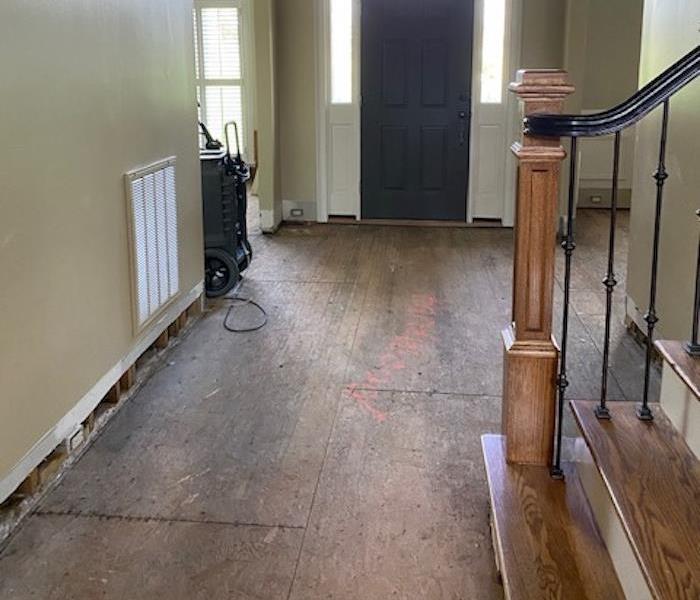
Step 4: Drying and Dehumidification
Our Water Damage Restoration Process
Oh dear! You have a water loss and your mind is racing! What should you do or not do? Who will you call for help? Should you try to handle it alone? Should you just mop it up and let the air conditioner dry it out? These are thoughts and questions that are frequently shared with us by clients facing the incredibly stressful event of a water loss. Jim, myself, and our outstanding team of technicians are here to help! We will be with you throughout the process and will remain with you until it is "Like it never even happened," including the water and drying/extraction by our trained and certified technicians.
Drying / Dehumidification
Our Professionals will use room measurements, temperature, and relative humidity to determine the optimal number of air movers and dehumidifiers to dry your home or business. We’ll carefully monitor the progress using moisture meters until the materials return to acceptable drying goals.
- Use Dehumidification Equipment
- Use Monitoring Equipment to Track Progress
Monitor Floor and Walls
We check the moisture levels to monitor the drying process.
- Monitor Floors
- Monitor Walls
Drying Equipment
- Industrial-grade dehumidifiers help prevent secondary water damage like swelling and warping of floors, walls, and furniture.
- High-speed air movers create airflow across walls, carpets, pads, and furniture, which accelerates the evaporation of moisture.





 24/7 Emergency Service
24/7 Emergency Service



